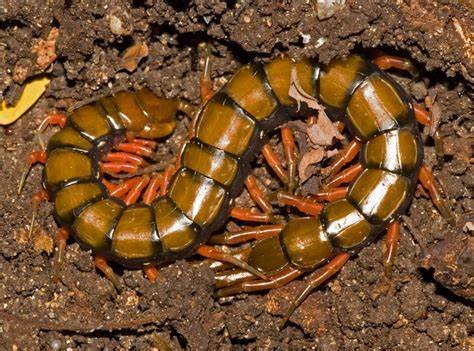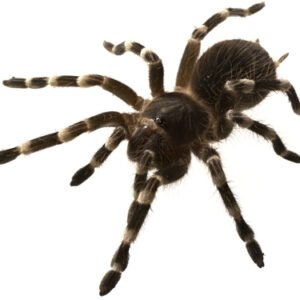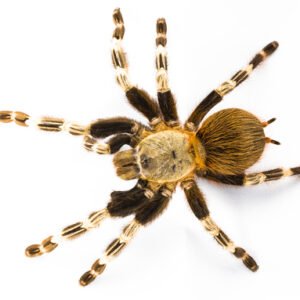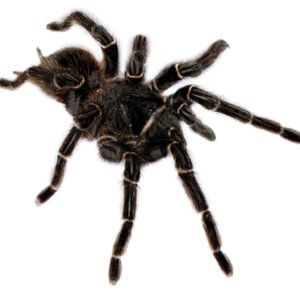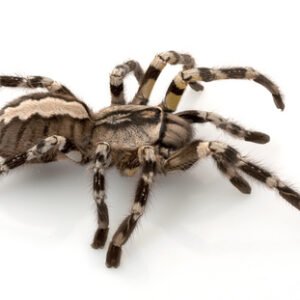The Amazonian Giant Centipede: Nature’s Fearsome Predator
Introduction to the Amazonian Giant Centipede
The Amazonian giant centipede, scientifically known as Scolopendra gigantea, stands as one of the largest terrestrial arthropods, captivating researchers and nature enthusiasts alike due to its impressive size and predatory prowess. Typically measuring between 20 to 30 centimeters in length, specific records have noted instances where individuals reach up to 33 centimeters, solidifying its status as a formidable inhabitant of tropical ecosystems.
Characteristically, the Amazonian giant centipede exhibits a striking coloration, ranging from a vivid yellow to deep brown hues, often interspersed with shades of black. This vibrant appearance not only serves an aesthetic purpose but also aids in camouflage, allowing it to merge seamlessly with the forest floor litter, where it primarily resides. Its elongated, segmented body is equipped with numerous pairs of legs, providing remarkable speed and agility as it navigates the dense undergrowth of its Amazonian habitat.
In terms of habitat, the Amazonian giant centipede thrives in humid, tropical rainforests, particularly within the Amazon Basin and other areas of Central and South America. This centipede is highly adaptable, residing in varied environments such as leaf litter, rotting logs, and soil, where it hunts for prey. Its distribution spans several ecosystems, from the rich biodiversity of the Amazon rainforest to more temperate wet forests, showcasing its ability to thrive in diverse tropical climates.
Remarkably, the adaptations of the Amazonian giant centipede extend beyond its physical attributes; it possesses powerful venom that paralyzes its prey, which mainly consists of insects and small vertebrates. This predatory nature reinforces its reputation as one of nature’s most fearsome predators, truly marking it as a noteworthy specimen within the annals of arthropod biology and ecological studies.
Behavior and Hunting Techniques
The Amazonian giant centipede, known scientifically as Scolopendra gigantea, is a remarkable example of an apex predator within its habitat. Renowned for its agility and speed, this formidable arthropod employs a combination of hunting strategies that allow it to effectively capture a diverse range of prey, including insects, small mammals, and reptiles. One of its most notable behaviors is its nocturnal activity; it is primarily active during the night, which enhances its hunting efficiency in the dim light of the Amazon rainforest.
Ambush tactics are core to the giant centipede’s hunting strategy. It often hides under leaf litter, logs, or within crevices, waiting patiently for unsuspecting prey to wander close. When an opportunity presents itself, the centipede strikes with astonishing speed, using its long, segmented body to coil around the target. Its first line of offense is its venomous bite, delivered through specialized claws known as forcipules. This venom not only subdues the prey but also plays a crucial role in deterring potential predators. The venom contains neurotoxins that can incapacitate prey almost instantly, allowing the centipede to consume larger organisms that may pose a challenge if alive.
The giant centipede’s keen sensory adaptations further aid its hunting capabilities. It possesses well-developed antennae that help detect vibrations and chemical cues in the environment, enhancing its ability to locate prey even in darkness. These adaptations illustrate the centipede’s role as a vital predator in its ecosystem, maintaining ecological balance by regulating prey populations. Its aggressive hunting style, coupled with its speed and venom, underscores its position as one of nature’s fearsome predators, illustrating the intricate dynamics of predator and prey in the diverse ecosystems of the Amazon.
Venom and Human Interactions
The Amazonian giant centipede (Scolopendra gigantea) possesses a highly sophisticated venom that serves as both a hunting tool and a defense mechanism. This venom is predominantly composed of a complex mixture of neurotoxins and enzymes that impact the nervous system of its prey, enabling it to immobilize animals such as small mammals, amphibians, and even birds. The exact biochemical composition of the venom varies among individual centipedes, but it generally contains potent compounds, including polypeptides and enzymes, that induce pain, inflammation, and a quick lethargy in their victims.
When it comes to human interactions, the venom of the Amazonian giant centipede can result in significant effects if envenomation occurs. Although these occurrences are rare, the symptoms can be quite severe and include excruciating pain, redness, swelling, and in some cases, systemic reactions such as fever and nausea. The pain from a bite has been likened to that of a bee sting but tends to persist longer and is more intense. Those with allergies to insect venom or other pre-existing health conditions may experience heightened reactions and should seek immediate medical attention.
In the event of a bite, there are several first aid measures that individuals should take. It is crucial to remain calm and avoid excessive movement, as this can exacerbate symptoms. The affected area should be cleaned gently with soap and water to minimize the risk of infection. Applying a cold pack can help reduce swelling and alleviate some pain. However, it is imperative to seek medical assistance, especially if the symptoms worsen or do not improve. Preventative measures include being cautious in environments where these centipedes are commonly found, such as humid and tropical forests, and wearing protective clothing. Understanding the nature of the venom and the potential risks enables individuals to interact safely with this fascinating yet fearsome predator.
Conservation Status and Ecological Importance
The Amazonian giant centipede (Scolopendra gigantea) occupies a vital niche within its ecosystem, acting as both predator and prey. Its conservation status has become increasingly concerning, primarily due to habitat destruction and the impacts of climate change. Deforestation in the Amazon rainforest not only limits the natural habitat of these centipedes but also disrupts the delicate balance of the ecosystems in which they reside. As their habitats diminish, these fascinating creatures face threats to their survival, leading to a decline in their populations.
In addition to loss of habitat, climate change poses a significant risk by altering temperature and moisture conditions, which are essential for the life cycle of centipedes. These changes lead to disruptions in their reproductive patterns and food availability. Conservation efforts are necessary to protect the Amazonian giant centipede and its environment, focusing on preserving their natural habitats and promoting sustainable practices that minimize human impact. Initiatives may include reforestation efforts, protected area designations, and raising awareness about the ecological importance of centipedes.
The role of the Amazonian giant centipede in controlling pest populations cannot be overstated. As a formidable predator, it helps maintain the balance of invertebrate populations, thus contributing to the overall health of its ecosystem. This predation is crucial for preventing the overpopulation of certain species that could result in ecological imbalances. Furthermore, centipedes support biodiversity, a key indicator of ecosystem stability. Without the presence of these predatory arthropods, both plant and animal life may suffer significant repercussions, leading to a decrease in biodiversity.
Understanding the conservation status and ecological significance of the Amazonian giant centipede is critical in fostering protective measures. Their survival is intertwined with the welfare of the rainforest ecosystem, highlighting the need for ongoing conservation efforts to ensure a balanced and thriving environment.

